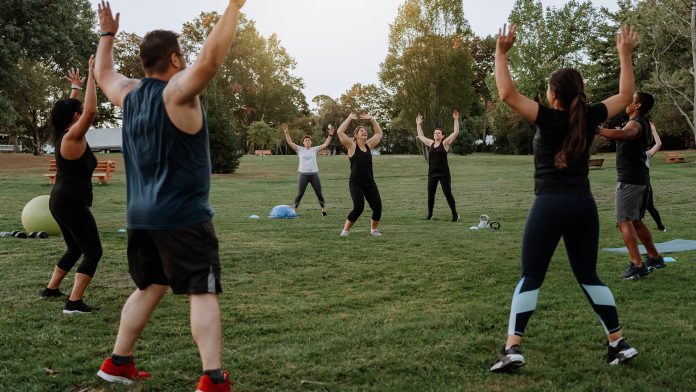
Anxiety is the mind and body’s reaction to stressful, dangerous, or unfamiliar situations, and in 2017, 284 million people worldwide were diagnosed with this disorder. A new study led by researchers at the University of Gothenburg, Sweden, shows that treating anxiety with exercise can alleviate symptoms.
Published in the Journal of Affective Disorders, the study looks at how treating anxiety through exercise could be a sustainable option and relieve symptoms. The research is based on 286 patients diagnosed with anxiety syndrome from primary care services in Gothenburg and the northern part of Halland County. The average age of participants was 39 years, with 70% being women. A further breakdown of patients showed that half the patients had lived with anxiety for at least ten years.
The study involved participants partaking in group exercise sessions, either moderate or strenuous, for 12 weeks. The results show that their anxiety symptoms were significantly alleviated regardless of whether the anxiety was a chronic condition when compared with a control group who received the recommended public health advice on physical activity.
Treating anxiety with exercise: the results
Most individuals in the treatment groups went from a baseline level of moderate to high anxiety to low anxiety level after the 12-week program. For participants who exercised at a relatively low intensity, the chance of improvement in terms of anxiety symptoms rose by a factor of 3.62. However, those who exercised at a higher intensity was 4.88. Participants were unaware of how individuals outside their group were treating anxiety symptoms with exercise.
Both treatment groups had 60-minute training sessions three times a week, under physical therapist guidance, with a mixture of strength training and cardio exercise. A warmup was followed by circuit training around 12 stations for 45 minutes, and sessions ended with a cool down and stretching. Patients in the study were asked to reach a percentage of their maximum heart rate – 60% for light or moderate exercises and 75% for high intensity. The levels were regularly validated using the Borg scale, an established rating scale for perceived physical exertion, and confirmed with heart rate monitors.
“There was a significant intensity trend for improvement — that is, the more intensely they exercised, the more their anxiety symptoms improved,” said Malin Henriksson, a doctoral student at Sahlgrenska Academy at the University of Gothenburg, a specialist in general medicine in the Halland Region, and the study’s first author.
Simplifying treatment options for anxiety
The current standard treatment for anxiety is cognitive-behavioral therapy (CBT) and psychotropic drugs. However, these drugs commonly have side effects, and patients with anxiety disorders frequently do not respond to medical treatment. Long waiting times for CBT can often worsen the prognosis. Therefore, treating anxiety with exercise could be an alternative therapy option that can be more convenient and affordable.
The present study was led by Maria Åberg, associate professor at the University of Gothenburg’s Sahlgrenska Academy, a specialist in general medicine in Region Västra Götaland’s primary healthcare organisation, and corresponding author.
“Doctors in primary care need treatments that are individualised have few side effects and are easy to prescribe. The model involving 12 weeks of physical training, regardless of intensity, represents an effective treatment that should be made available in primary health care more often for people with anxiety issues,” Åberg commented.









